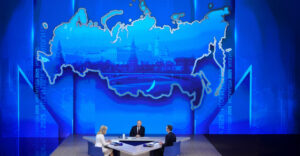Syria is entering a new phase of conflict as the situation in the country has escalated dangerously in recent days.
As BBC reports in an analysis, since November 27, a coalition of jihadist rebel groups, led by Hayat Tahrir al-Sham (HTS), launched a large-scale offensive against the Assad regime’s government forces. Their advance has been described by international observers as “impressive”, while reports from the region point to the collapse of the regime’s defensive lines in key areas.
The HTS, which has split from al-Qaeda since 2016, is attempting to distance itself from its jihadist past by portraying the attack as a joint rebel effort against the regime.
The operation, called Operation Repelling the Aggression, has already led to the capture of Aleppo Castle, a symbol stronghold held by government forces since 2015. This name and its official announcements avoid jihadist language and Islamist references. The rebels have also advanced towards the city of Hama, and are reported to have captured significant military supplies, including helicopters and equipment.
Syrians are generally repelled by extreme religious rhetoric. As jihadist groups dominated the uprising after the crushing of pro-democracy demonstrations after about the first year of the war after 2011, many Syrians either remained neutral or reluctantly sided with the regime because they feared the Islamic State’s murderous jihadist ideology.
Images from social media show rebels roaming the captured areas, while the presence of fighters queuing for food in Aleppo restaurants in a sign of temporary calm in the region is striking.
The regime’s insecurity and international concerns
Despite the collapse of strategic points, the Assad regime and its allies, including Russia, are expected to respond.
Russia has already carried out air strikes against the rebels, while the ability of regime forces to maintain control is in serious doubt. Meanwhile, Iran, a key ally of Assad, is facing serious blows to its influence in the region due to Israeli attacks that have weakened its military presence.
The UN has expressed grave concern about the developments. Geir Pedersen, the UN special envoy to Syria, said the latest clashes “pose serious risks to civilians and have serious implications for regional and international security”. He also recalled the collective failure of the international community to implement UN Resolution 2254, which calls for a political solution through elections and a new constitution.
No doubt, the regime and its allies will try to stabilize and fight back, especially with air power. The rebels have no air force, although, in another indication of how drones are revolutionizing warfare, there are reports that they used a drone to kill a senior regime intelligence official.
The goal was a future shaped by free elections and a new constitution. But that meant Assad and his family would leave a country they had for years treated as their fiefdom. More than half a million dead testify to their determination not to let that happen.
It is too early to write off the Assad regime. He has a core of genuine support. Some Syrians see it as the least bad option – better than the jihadists who dominated the uprising. But if other anti-Assad groups – and there are many – rise, his regime will again be in mortal danger.
Local and international landscape
The rebel offensive highlights the fragmentation of northern Syria. The northeast is controlled by the Kurdish-led Syrian Democratic Forces (SDF), backed by the US, which maintains about 900 troops in the region.
Turkey controls border areas through troops and supported militias, while Islamic State-linked groups continue to carry out attacks in the desert.
It is worth noting that HTS is trying to reshape its image by avoiding religious references in its communication strategy. According to BBC expert Mina al-Lami, this change of language is aimed at distancing itself from the jihadist past and attracting wider support.
HTS leader Abu Muhammad al-Jawlani has a long history as a jihadist leader in Iraq and Syria. In recent years, however, he has moved away from strict jihadist ideology to try to broaden his group’s appeal. The rebranding is also being used to attract support for the offensive.
The Future of Syria
The resumption of fighting is a reminder that the conflict in Syria has never ended, but merely entered a “freeze” phase in recent years.
The Assad regime remains weakened and its inability to maintain control makes the situation even more volatile. During a decade of war after 2011, Bashar al-Assad’s rule survived because he was prepared to dismantle Syria to save the regime he inherited from his father. To do so he relied on powerful allies, Russia, Iran, and Lebanese Hezbollah. They intervened on his side against rebel groups ranging from jihadist extremists of the Islamic State to militias backed by the US and the rich Gulf monarchies.
Geir Pedersen reiterated the need for a political solution, but the path to it seems distant as the country plunges back into violence.
The Assad regime never regained the power it used to control Syria before 2011, the year of the Arab uprisings, though it still holds several Syrian prisoners in its jails. Even so, until the last few days, President Bashar al-Assad’s regime controlled the major cities, their surrounding countryside, and the main highways connecting them.
The renewed war raises serious questions about the future of the region, as well as the role of the international community in stabilizing Syria, which remains one of the biggest humanitarian crises of the century.
Ask me anything
Explore related questions





